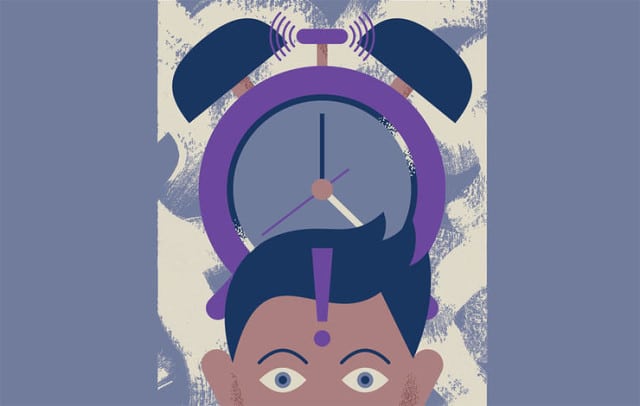Mental Tricks To Push Through Mid-Race Pain
Rethink how you respond to the hurt and you’ll nail every tough run.
If you want to run your best, there’s no way around it: You’re going to hurt. Whether you are racing the kay or the marathon, the ability to push through pain is what lets you translate training into a brag-worthy finish. And even if you run for fitness, you’ll need to keep pushing your limits to see progress as your body becomes more efficient.
Research shows that the brain may “shut down” your body when you still have more to give: In experiments from the University of Cape Town, participants were told to perform high-intensity exercise for as long as possible. When they tapped out, researchers stimulated their muscles, which contracted with great force.
Samuele Marcora, director of research at the University of Kent’s School of Sport and Exercise Sciences in England, says that while we run, the brain weighs “perception of effort with our motivation to succeed.” When the former outweighs the latter, we slow or stop. If we change how we perceive effort and/or boost motivation, we may get more from our bodies.
Recall Sacrifices

When the mid-race pain really sets in for ultra-runner Dylan Bowman, he shifts his focus to, in his words, “matching the suck with motivation.” He does this by thinking about all the sacrifices he’s made to get there: passing on extra pizza and beer, missing out on time with his fiancée in order to train, travelling to get to the race. “I’ve ended up winning races I didn’t think I was going to win by thinking about all the things I’ve given up,” Bowman says. “It’s crazy how much more I can endure when I do this.”
It helps to be prepared, so revisit your training log before a race to pinpoint the occasions on which you dragged yourself out of your warm bed or skipped a post-work happy hour to squeeze in a run. Recalling those moments when you’re starting to suffer may take your mind off the discomfort and boost your drive to make sure you get the most out of your hard work. A similar strategy may help you endure tough workouts, too.
Give Thanks

Karl Meltzer, who last year set the speed record for through-hiking the Appalachian Trail (averaging about 47 hilly and technical kilometres for 45 consecutive days), says his secret for handling pain is “thinking about how fortunate I am to be out here doing this.” Throughout his hike, Meltzer deliberately and repeatedly thanked his support crew. “Showing gratitude,” he says, “almost always makes things better.”
Meltzer is on to something: According to Emiliana Simon-Thomas, science director at University of California Berkeley’s Greater Good Science Centre, expressing gratitude is effective because it “helps people transition from a self-focused and perhaps anxious mind-set to a more optimistic and content one.” And optimism, she says, “opens the possibility of a positive outcome, which in and of itself is very beneficial.” In fact, two recently published studies found that performing grateful acts and reflecting on all that you have to be grateful for led to positive changes in how subjects experienced pain and effort.
When the going gets tough, reflect on the people or circumstances that have contributed to your being out running right now. Some examples: your spouse, because he or she watches the kids while you log kilometres; your body, because it is healthy; your employer, because your salary pays for running gear and race registration. Even better, when you run through aid stations mid-race, smile and thank the volunteers: Simon-Thomas says that gratitude is most powerful when you verbally share it with others.
Meditate

There is a growing body of evidence that suggests meditating for just eight weeks can induce structural changes in the part of the brain related to self-regulation. This helps manage our response to highly emotional stimuli, such as pain. Brandon Rennels, a mindfulness meditation teacher at the Search Inside Yourself Leadership Institute in San Francisco, says that meditation helps you distinguish between physical discomfort and your emotional response to it. “Pain is bad enough, but the anxiety attached to pain can sometimes be even worse.”
To see how this happens, researchers at the University of Wisconsin scanned the brains of novice and expert meditators while applying a pain sensation to their legs. At first, both groups experienced a spike in activity in the anterior insula, a part of the brain linked to pain perception. Then, brain activity remained heightened in the anterior insulas of the novice meditators while it quickly subsided in those of the experts. It was as if the expert meditators chose not to engage in the patterns of anxiety that often make pain feel worse.
Rennels recommends meditation beginners start with one minute per day and gradually increase duration, working up to 15 to 20 minutes per day or more. Timing is less important than consistency, so do this whenever you can fit it in. To meditate, sit comfortably in a quiet place, set a timer for your desired duration, and focus on the sensation of breathing. If thoughts arise, notice them, then direct your focus back to your breath.
READ MORE ON: injury-prevention motivation pain

